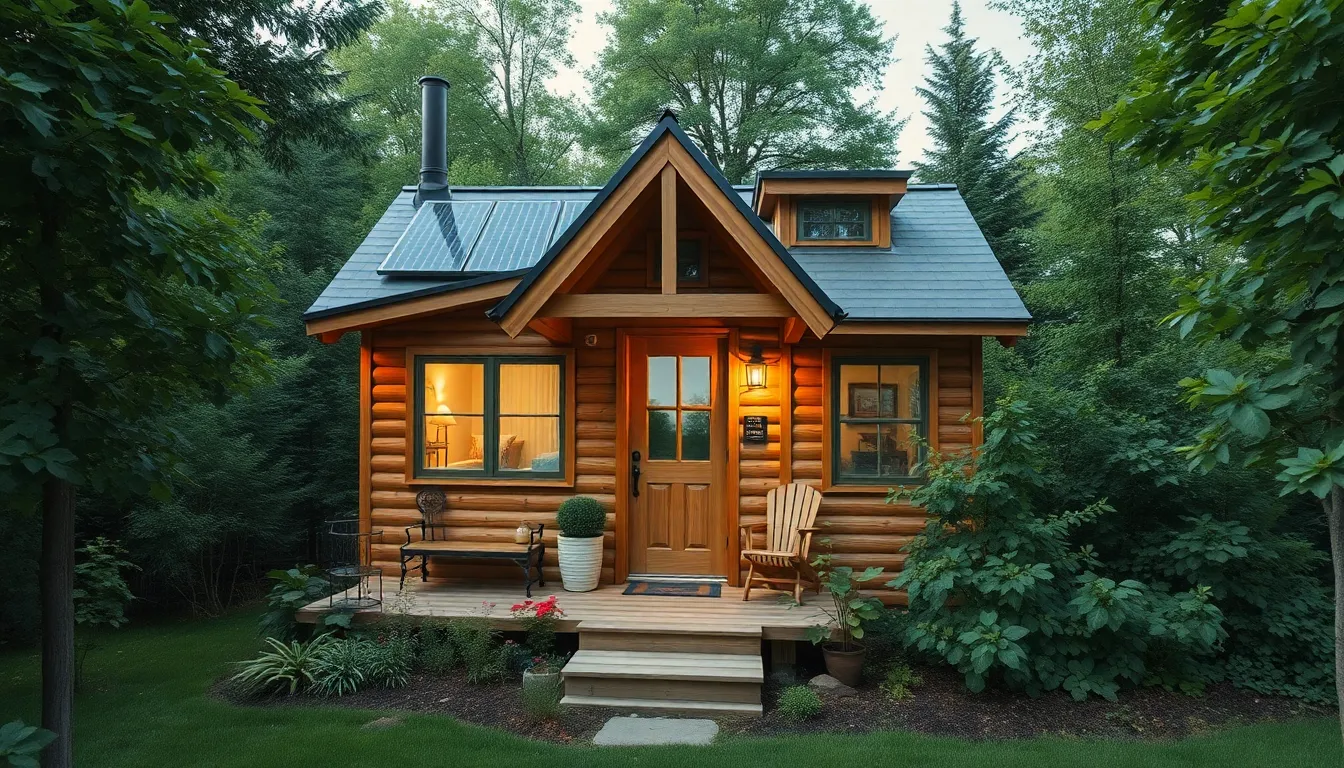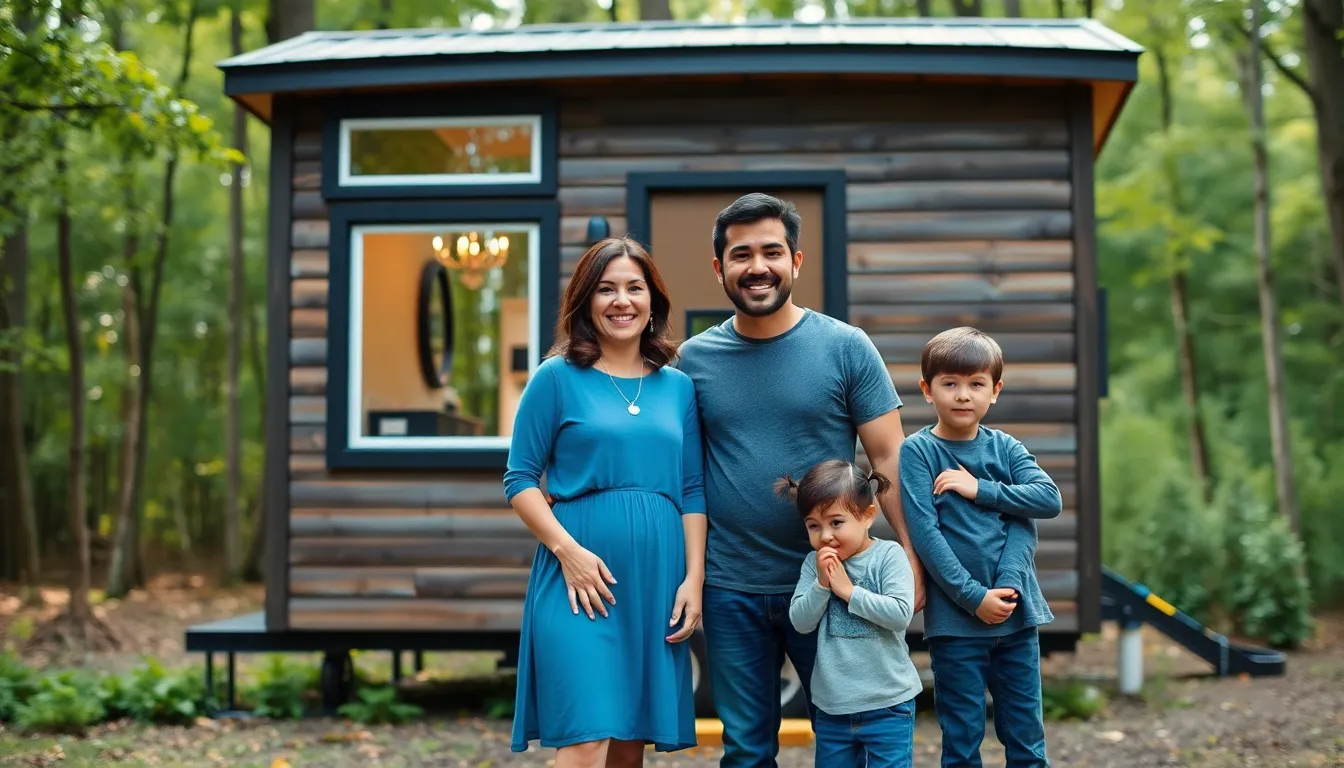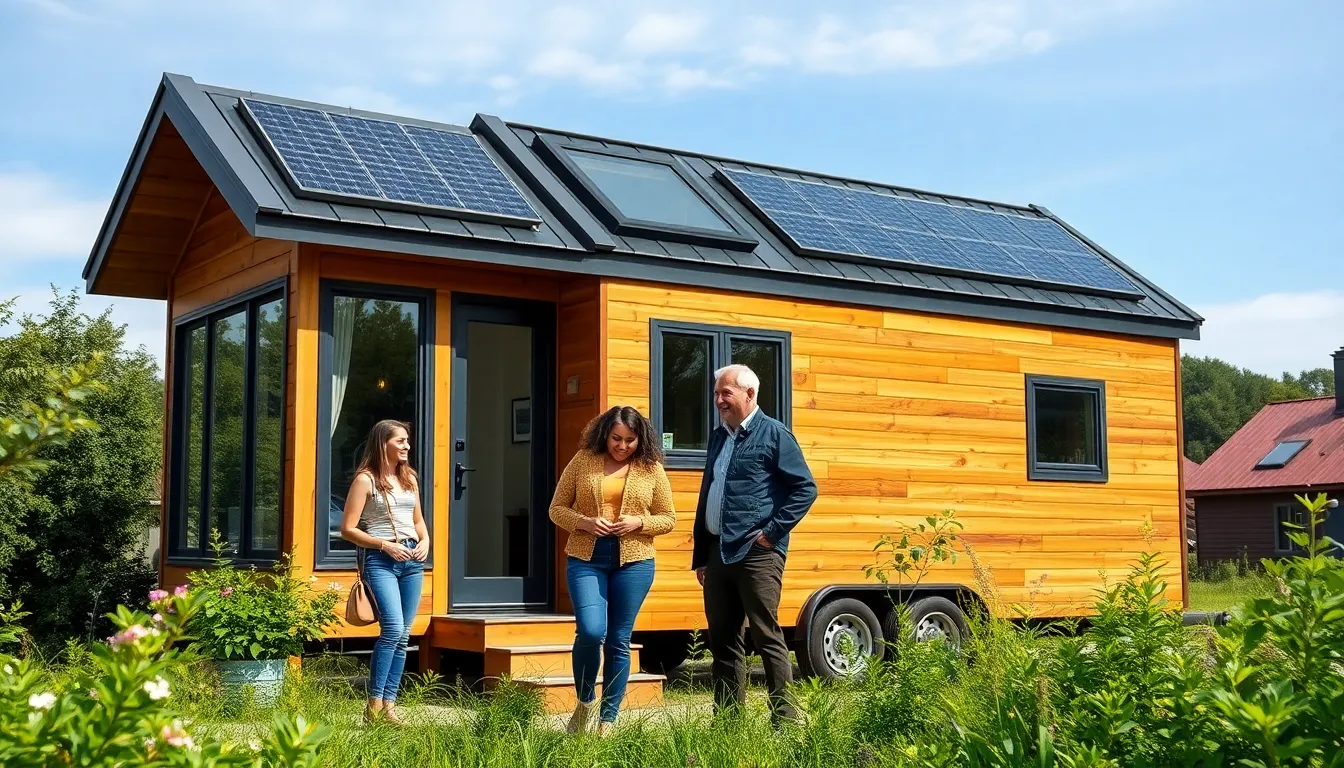As the tiny home movement gains momentum, more people are embracing the minimalist lifestyle. With their eco-friendly design and affordability, tiny homes offer a unique way to live. However, this shift in housing comes with its own set of challenges, particularly when it comes to insurance.
Tiny home insurance is essential for protecting these compact dwellings and their inhabitants. It’s not just about safeguarding against natural disasters; it also covers liability and personal property. Understanding the nuances of tiny home insurance can help owners make informed decisions and ensure their investment is secure.
Table of Contents
ToggleWhat Is Tiny Home Insurance?
Tiny home insurance provides coverage specifically designed for tiny homes, offering protection against various risks associated with living in smaller dwellings. This insurance addresses unique challenges faced by tiny homeowners, ensuring peace of mind for their investments.
Definition and Overview
Tiny home insurance refers to policies tailored to the needs of tiny homeowners. These policies typically cover the structure, personal belongings, liability, and additional living expenses. Coverage can vary widely, encompassing elements such as natural disaster protection, vandalism, and theft. Tiny home insurance accommodates both mobile and stationary tiny homes, depending on the policy.
Importance of Coverage
Having tiny home insurance is crucial for safeguarding assets and mitigating financial loss. Coverage protects against potential damage from natural disasters, such as floods or wildfires, which can devastate homes. Liability coverage guards against incidents that may occur on the property, such as accidents involving guests. This insurance also assists with replacement costs for personal property, providing financial security in emergencies.
Types of Tiny Home Insurance Policies

Tiny home insurance policies come in various forms, catering to the distinct needs of tiny homeowners. Understanding the differences between these policies is essential for selecting appropriate coverage.
Standard Homeowners Insurance
Standard homeowners insurance often covers residential properties but may not fully address the unique aspects of tiny homes. Coverage typically includes protection for the dwelling structure, personal belongings, and liability. However, traditional policies may impose size limitations or exclude homes on wheels. Homeowners must verify whether their tiny home qualifies for this type of policy or explore additional coverage options for specific requirements.
Specialty Tiny Home Insurance
Specialty tiny home insurance is tailored specifically for tiny homes, offering comprehensive coverage designed for both mobile and stationary structures. Policies usually include protection against perils such as fire, wind, hail, vandalism, and theft. Specialty insurance can also address unique aspects like custom materials, solar panels, and eco-friendly features. Many providers also offer liability coverage and additional living expenses, ensuring homeowners are financially protected in emergencies. This type of insurance provides peace of mind, allowing tiny homeowners to enjoy their minimalist lifestyle confidently.
Factors Affecting Tiny Home Insurance Rates
Several factors influence tiny home insurance rates, shaping the overall cost and coverage options. Understanding these elements helps tiny homeowners tailor their insurance policies appropriately.
Location and Risks
Location significantly impacts insurance rates for tiny homes. Homes situated in high-risk areas, such as regions prone to flooding, wildfires, or hurricanes, typically incur higher premiums. Nearby amenities and local crime rates also play a role; areas with higher crime rates may result in increased liability coverage costs. Additionally, experiences from insurance companies with claims in specific regions can affect rates. Tiny homeowners should evaluate risk factors specific to their locations, enhancing coverage choices based on these evaluations.
Size and Value of the Tiny Home
The size and value of a tiny home directly correlate with insurance rates. Smaller, lower-value homes often result in lower premiums, but the cost may increase for larger or high-end models. The replacement cost of materials used in construction also matters; unique features like custom materials, solar panels, or high-quality finishes can elevate the overall value and, consequently, the insurance cost. Accurate appraisal of the tiny home’s worth ensures homeowners receive appropriate coverage tailored to their specific dwelling.
Tips for Choosing the Right Tiny Home Insurance
Selecting the right tiny home insurance policy requires careful consideration of individual needs and options available. Understanding coverage specifics and comparing insurance providers ensures homeowners make informed choices that protect their investments.
Assessing Your Coverage Needs
Assessing coverage needs entails evaluating the tiny home’s value, structure, and location. Homeowners should consider several factors:
- Home Value: Determine the financial worth of the tiny home, including land and improvements. Accurate appraisals help avoid underinsurance or overinsurance.
- Personal Property: Itemize personal belongings to gauge necessary coverage levels for items like furniture, appliances, and electronics.
- Liability Coverage: Quantify potential liability risks from guests or nearby hazards. Higher liability limits provide better financial protection against lawsuits.
- Natural Disaster Risks: Identify specific threats based on the location, including floods, fires, or storms. Coverage for unique threats may require additional riders.
- Living Situations: Consider whether the tiny home is stationary or mobile. Different policies cater to various living arrangements, influencing coverage choices.
Comparing Insurance Providers
Comparing insurance providers involves analyzing policy options, coverage limits, and premiums. Homeowners can follow these steps:
- Research Providers: Investigate reputable insurers that specialize in tiny home or mobile home insurance. Look for customer reviews and ratings to gauge reliability.
- Request Quotes: Collect quotes from multiple providers for an apples-to-apples comparison. Ensure each quote includes similar coverage levels and deductibles.
- Evaluate Policies: Carefully read policy terms, exclusions, and additional benefits. Identify specific coverage for unique features like solar panels or custom build materials.
- Check Discounts: Investigate available discounts, such as bundling home and auto insurance or installing security systems. Discounts reduce overall costs.
- Consult Agents: Contact agents directly to clarify questions about policies or specific coverage scenarios. Knowledgeable agents can provide tailored advice.
These practices help tiny homeowners secure optimal coverage while maximizing value and protecting their investments.
Tiny home insurance is a vital consideration for anyone embracing the minimalist lifestyle. With unique risks and challenges associated with these compact dwellings it’s essential for homeowners to find the right coverage. By understanding the specific insurance options available and the factors influencing rates, they can make informed decisions that protect their investments.
Choosing the right policy not only safeguards against potential disasters but also provides peace of mind. As the tiny home movement continues to grow, securing adequate insurance will play a crucial role in ensuring these homes remain safe havens for their owners.






